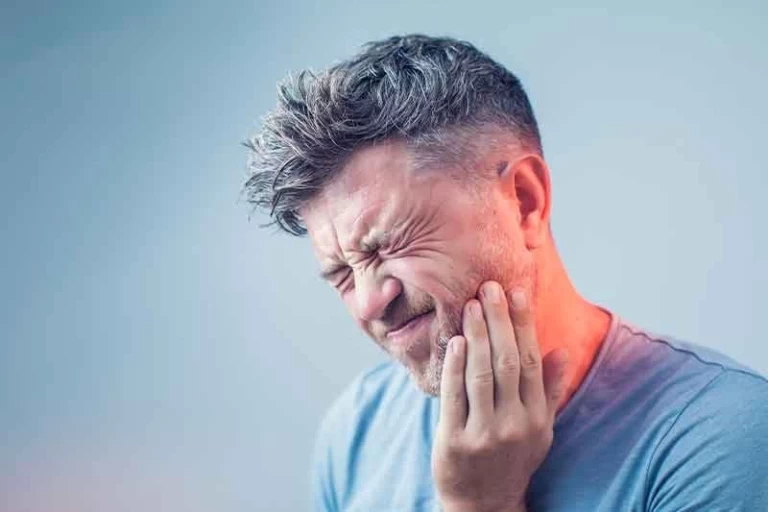
Temporomandibular Joint (TMJ) Dysfunction
What is Temporomandibular Joint Dysfunction?
Before we discuss the Temporomandibular Joint Dysfunction it is necessary to understand the basic anatomy of the joint. The jaw or mandible is connected with the temporal bones of the skull through this joint. This synovial articulation is located on both sides of the skull and is dependent on each other.
This joint allows the clenching, unclenching of the jaw including acts like swallowing, chewing, talking, and yawning. Temporomandibular Joint Dysfunction, or Temporomandibular Joint Syndrome, is a musculoskeletal and neuromuscular disorder in which the functional ability of the joint is deranged.
In this condition, the bones constituting the joint and the muscles which control the movement of the jaw contribute to pain and discomfort. Damage to the bones i.e. temporal bone and mandible and muscles of mastication i.e. masseter, temporalis, lateral, and medial pterygoid are involved.
Pain in the joint while clenching or unclenching it, swelling on the side of the face, and headaches are commonly observed conditions in Temporomandibular Dysfunction. Usually, the cause of dysfunction is unclear. However, physical trauma or inflammation is considered to be the most possible causes which lead to this condition.
What are the causes?
The exact cause of TMJ dysfunction is still unknown. However, there are multiple possible causes derived by doctors. Dentists also claim that injury to only jaw bones and muscles is not the culprit but the muscles of the head and neck are equally responsible.
In most of cases the individuals intentionally or unintentionally grind (bruxism) or clench their teeth by exerting a lot of pressure on them. The force is too much for the joint to bear and causes dysfunction. Other causes include chronic stress in which the muscles of the face, jaw, head, and neck tighten instead of staying relaxed.
Stretched muscles clench teeth and gradually lead to the dysfunction of joints. The History and lifestyle of individuals suffering from TMJ dysfunctions also reveal some other causes. Too much gum chewing keeps the joint functioning for long hours without a break causing fatigue.
Braces for the alignment of teeth are also considered to be a cause. Also, due to severe trauma to the neck and head, any damage to cranial nerve V and VII can compromise the activity of several muscles concerned with the activity of the jaw.
Other than bruxism, malocclusion, anxiety, braces, and inflammatory musculoskeletal diseases, poor posture also plays a role in developing TMJ dysfunction. The accurate mechanism for its interference is still unclear.
What are the symptoms of TMJ Dysfunction?
There is persistent crackling or whiplash pain on one or both TMJs. Pain is often coupled with a tenderness that often worsens into swelling on the affected side of the face. Since the joint is exactly around the ear, therefore, the pain extends up to the ear due to which a condition called Tinnitus is also experienced by the sufferer.
In some cases, the complete face, head, and neck ache and feel tender. Moreover, it becomes really difficult for the patient to chew, talk, or yawn. The jaw becomes quite stiff and denies unclenching. When the affected person tries to open or close the jaw they hear a clicking or popping sound as if the jaw is expelled from the socket.
This kind of sound is called crepitus. The jaw appears to be stuck or locked while clenching or unclenching. This condition is referred to as lockjaw. However, the locking of the joint is not associated with pain.
Other than the conditions associated with the jaw their other symptoms as well which include toothache, headache, neck ache, dizziness, earache, loss of hearing, shoulder pain, and tinnitus.
Who is at risk to suffer from TMJ Dysfunction?
According to statistics, women are more at risk than men. Mostly, individuals aged between 20 and 40 are at risk to develop this condition. People suffering from osteoarthritis, rheumatoid arthritis, jaw injury, and bruxism are more likely to suffer from TMJ dysfunction.
How is it diagnosed?
The diagnosis of TMJ dysfunction mainly relies on history and physical examination. There is no laboratory test or imaging scan which can indicate the accurate diagnosis for this condition. The patients of TMJ dysfunction are referred to as oral or maxillofacial specialists.
They ask the patient to perform some movements including yawning, talking, chewing, clenching, and unclenching of the jaw. They inquire about popping or clicking sound when moving the jaw and intensity and extent of pain.
Close examination of the jaw and gently pressing the areas around the jaw to identify tenderness and pain give clear clues. The apparent symptoms, history of bruxism, jaw injury or arthritis, and failure to perform any of the mentioned movements smoothly indicate TMJ dysfunction.
If the diagnosis is still not confirmed then the doctor performs a simple full-face X-ray, CT scan, or MRI. X-Ray reveals the condition of teeth and jaw. CT scan shows any damage to the mandible and temporal bone. MRI focuses on trauma to the cartilage and surrounding soft tissue.
However, after history and physical examination arthroscopy is the most reliable procedure for the diagnosis. In this procedure, a small tube is inserted into the joint space with a camera to view any apparent cause there. [2}
Upper Cervical Chiropractic does not let the pain come back! Since we know how intimate the link between neck and jaw is, we can clearly give Upper Cervical Chiropractic care the responsibility for helping a patient with TMJ dysfunction.
Other treatment approaches are not as effective as this one. Chiropractic experts reveal that the first and second vertebrae of the cervical spine are directly responsible for the TMJ dysfunction. These vertebrae, known as Atlas and Axis, when experience misalignment inhibit the side-to-side and u-and-down movements of the head.
The surrounding muscles are stretched which are also connected from the skull to the jaw. This proves the vitality of the Upper Cervical area in the case of TMJ dysfunction pain and complications. Chiropractic experts carry out gentle and simple adjustments in the cervical spine. Before and after every session X-ray is taken to confirm the correct alignment.




Leave a comment